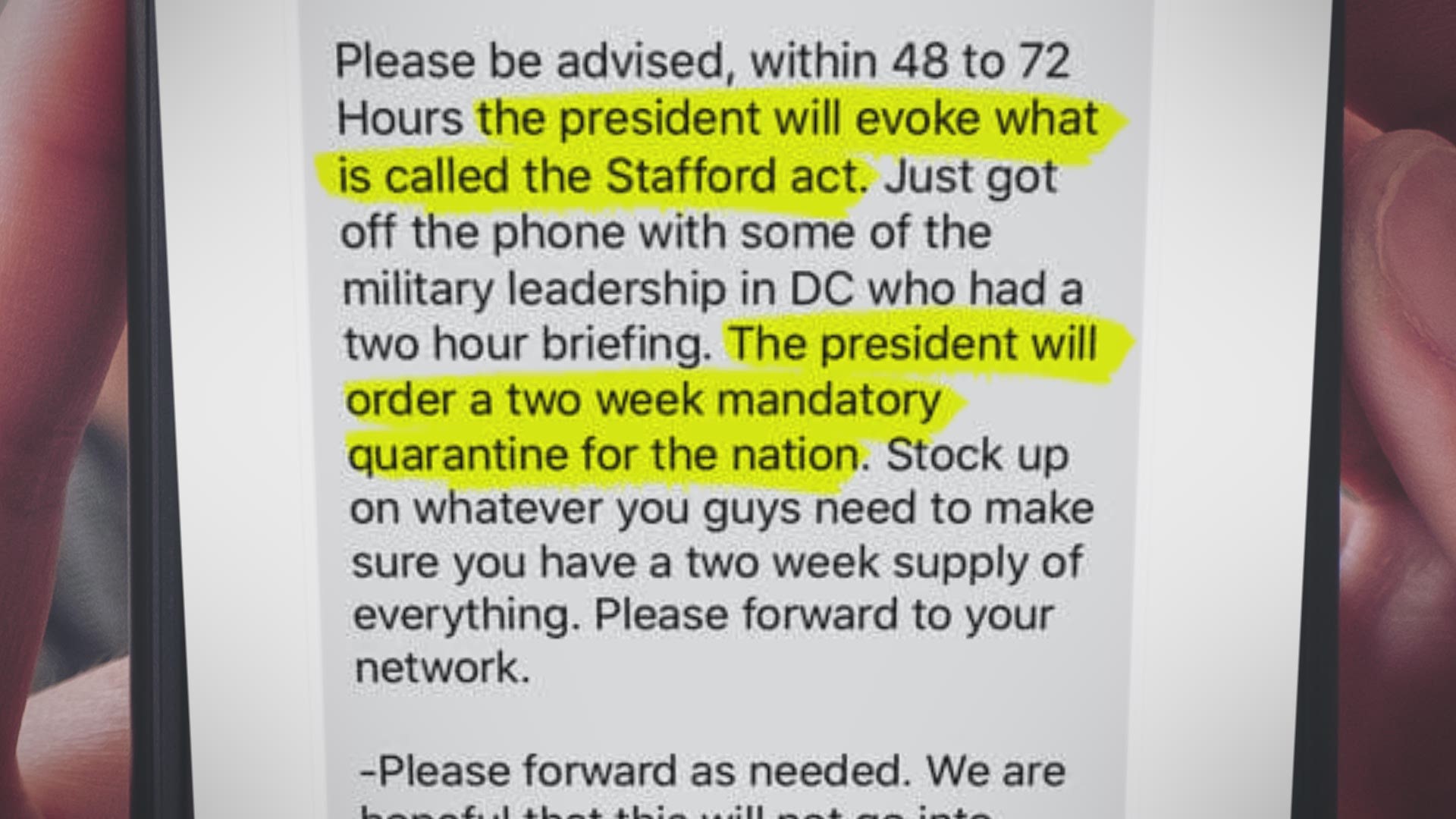Stocks are closing solidly higher after President Donald Trump promised he's “going big” with plans to blunt the economic pain caused by the coronavirus outbreak. The market got back not quite half of what it lost in a breathtaking drop a day earlier, which was the biggest in more than three decades.
Treasury Secretary Steven Mnuchin said the government intends to send checks to Americans in the next two weeks in an effort to curb the economic costs of the virus. He also said the government intends to keep financial markets open.
The S&P 500 rose 6% and the Dow rose 5.2%, or 1,049 points.
Earlier, the Federal Reserve dusted off a program from the 2008 financial crisis to get the short-term borrowing market working more smoothly.
Several economists say the global recession has already begun as large swaths of the economy shut down due to the virus. The Trump administration is proposing an $850 billion stimulus plan to help the economy, sources told The Associated Press.
Tuesday's gains followed a day in which the Dow fell almost 13% with a single-day record 2,997-point loss. The S&P fell nearly 12% and the Nasdaq fell 12.32% on concerns the coronavirus pandemic was dragging the economy into a recession.
Wild point swings have become commonplace on Wall Street the last couple of weeks. The Dow has been known to drop more than 1,000 points one day, gain some or all of it back the next, drop 2,000 the next day and then nearly recover it all the next.
The Dow Jones is on the edge of a dubious milestone. If it loses 394 points Tuesday, it will fall below 19,795.06. It will have lost all its gains during Donald Trump's presidency. The president often points to the Dow's record highs when publicly assessing the success of his administration.
Share prices in overseas markets bounced back. Paris, London, Hong Kong and Sydney logged solid gains on Tuesday while Tokyo's benchmark was flat.
The Philippine stock market was closed as of Tuesday after the government imposed restrictions on movement in the capital.
Monday's 12% drop for the S&P 500 means it has plummeted nearly 30% since setting a record less than a month ago, and it’s at its lowest point since the end of 2018. Losses were steep Monday, accelerating in the last half hour of trading after President Donald Trump said the economy may be headed for a recession and asked Americans to avoid gatherings of more than 10 people.
The nearly 13% drop for the Dow was the worst since the 1987 crash.
The plunge came even though the Federal Reserve rushed to announce a new round of emergency actions before markets opened for trading Monday. The moves are aimed at propping up the economy and getting financial markets running smoothly again, but they may have raised fears even further. Investors are also waiting for the White House and Congress to offer more aid to an economy that’s increasingly shutting down by the hour.
The market's losses the last few weeks are the steepest since the 2008 financial crisis dragged the economy into the Great Recession. Trump and professional investors say the stock market could bounce back strongly as soon as health experts get the virus under control.
The problem is that no one knows when that could be, and broad swaths of the economy are grinding closer to a standstill in the meanwhile, from parked airplanes to the nearly empty restaurant around the corner.
“It's impossible to say when and how we're going to reach bottom,” said Danielle DiMartino Booth, chief executive officer of Quill Intelligence.
The spreading coronavirus is causing businesses around the world to shut their doors. While that can slow the spread of the virus, it's also taking cash out of the pockets of businesses and workers. That has economists slashing their expectations for upcoming months, and Wells Fargo Securities said Monday it now projects the U.S. economy will fall into a recession in the April-through-June quarter.
Joel Prakken, chief U.S. economist at IHS Markit, projects the economy will shrink at a 5.4% annualized rate during the quarter, which would be its worst performance since the depths of the Great Recession.
The best-case scenario for many investors is that the economic shock will be steep but short, with growth recovering later this year after businesses reopen. Pessimists, though, are preparing for a longer haul.

